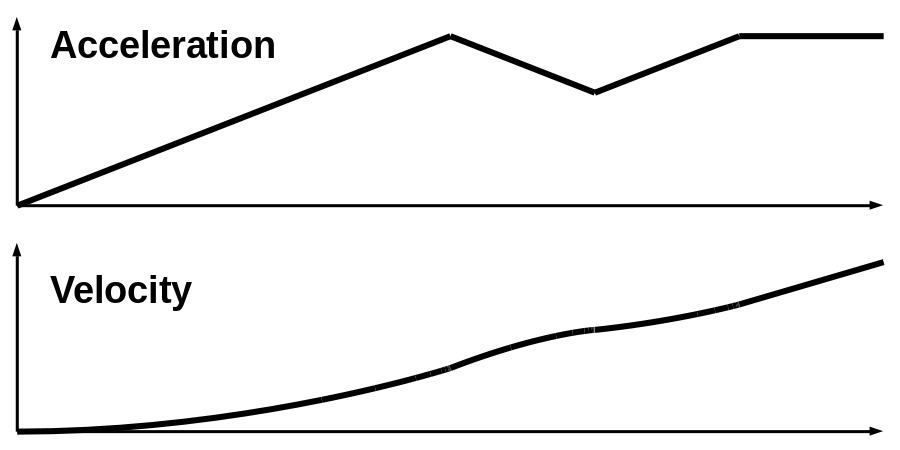|
Size: 2192
Comment:
|
Size: 2196
Comment:
|
| Deletions are marked like this. | Additions are marked like this. |
| Line 15: | Line 15: |
| {{ attachment:InitialAcceleration.png | | W=300 }} | {{ attachment:InitialAcceleration.png | | width=300 }} |
Generator Model
The Launch Loop electrically extracts power from the laminated iron and aluminum winding rotor through aluminum stator windings and delivers it to the Halbach arrays on the magnet sled. The current design has six centimeter-scale stator slots with laminated iron on both sides; this approximates an induction generator 15 centimeters wide.
Accurate modelling of the induction generator requires 3D finite element modelling and experience with error avoidance - simulation tools are garbage in, garbage out. Given the ultra-high rotor speeds, my guess is that slip will be very low, and the stator field will travel forwards at speeds very close to the 12.5 km/s rotor speed.
Induction generators require reactive power to establish the field. The customary approach requires capacitors to store field energy, but 2000 km of capacitors capable of briefly moving megawatts per winding is expensive and heavy. I will assume we can supply the VAR (volt-amp-reactive) power from the Halbach arrays on the vehicle sled. For this discussion, assume a 50 meter long Halbach array with 10 centimeter pole-pair pitch, or 500 wavelengths.
How much power?
The design assumes around 200 KN pushing the vehicle and sled at 30 m/s². For a vehicle accelerating to 10500 m/s (near escape velocity), the drive power will increase from around zero at the start to 2.1 GW, approximately 1850 kilometers eastwards down the track. The "jerk" or change in acceleration might be 10 m/s³, occuring over 3 seconds, at beginning and end.
An additional 1 second "jerk ripple" at the start will test the vehicle's response to acceleration reduction, so the initial acceleration and velocity profile might look like so:

The first 6 km of track will indirectly drive the sled through switching power supplies, up to 300 m/s . This linear motor "mass driver" will be heavy and expensive; power switchers will
- which moves 600 m/s at the start of the main acceleration track
The Halbach arrays on the vehicle sled will have fixed spacings, though they will vary somewhat along the length of the sled.
